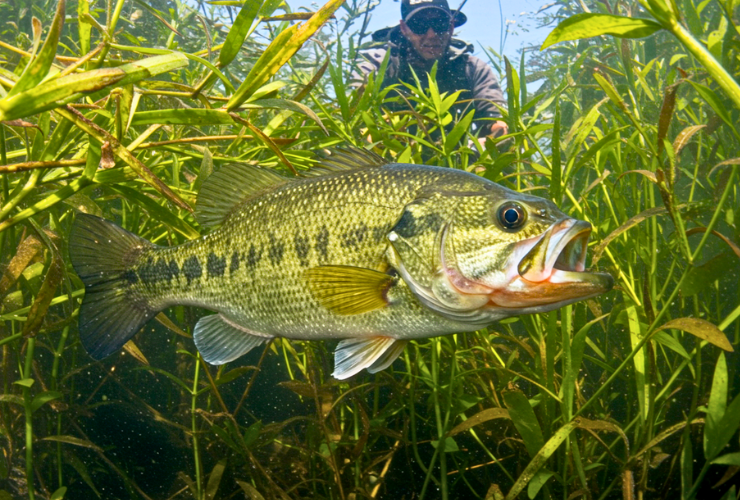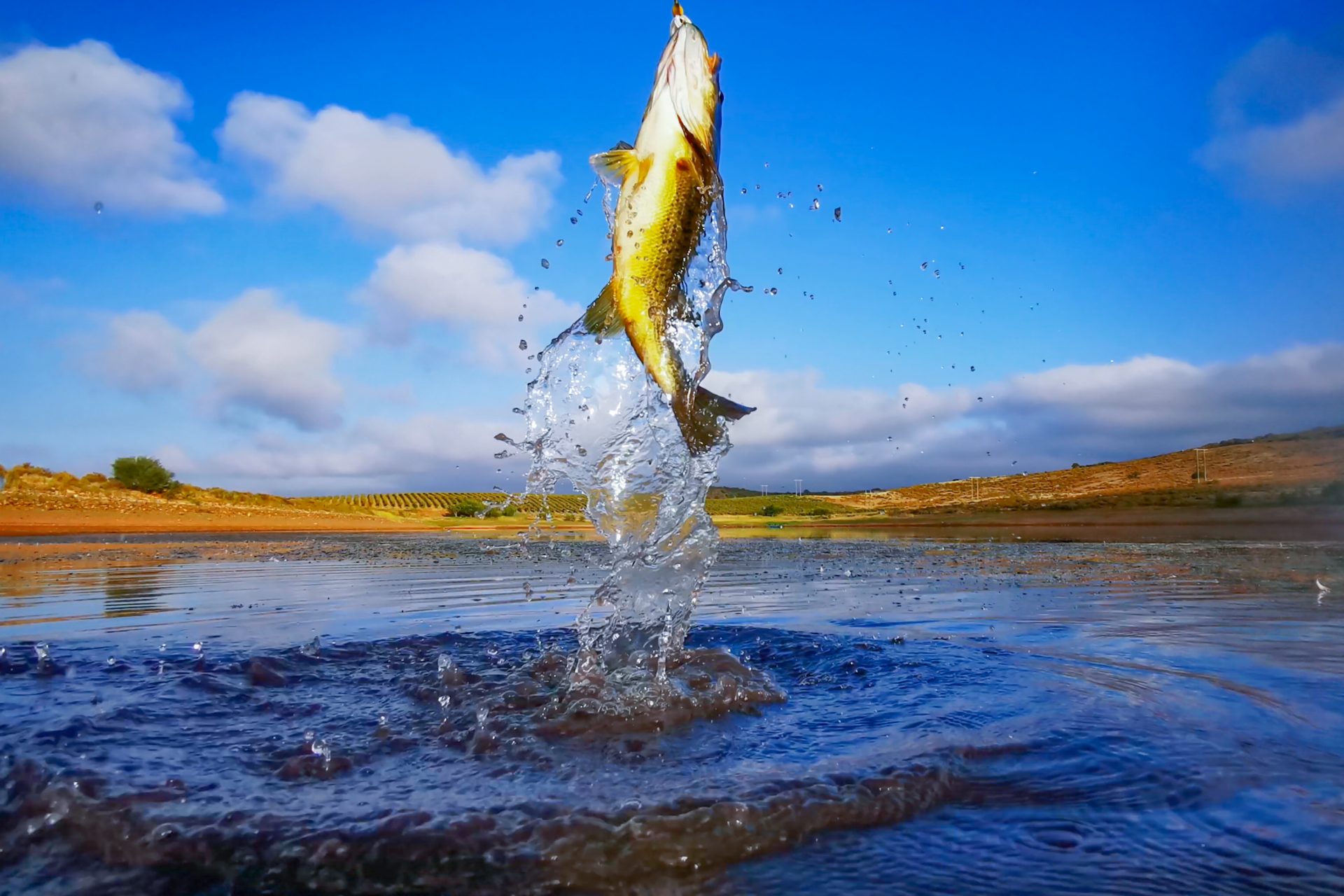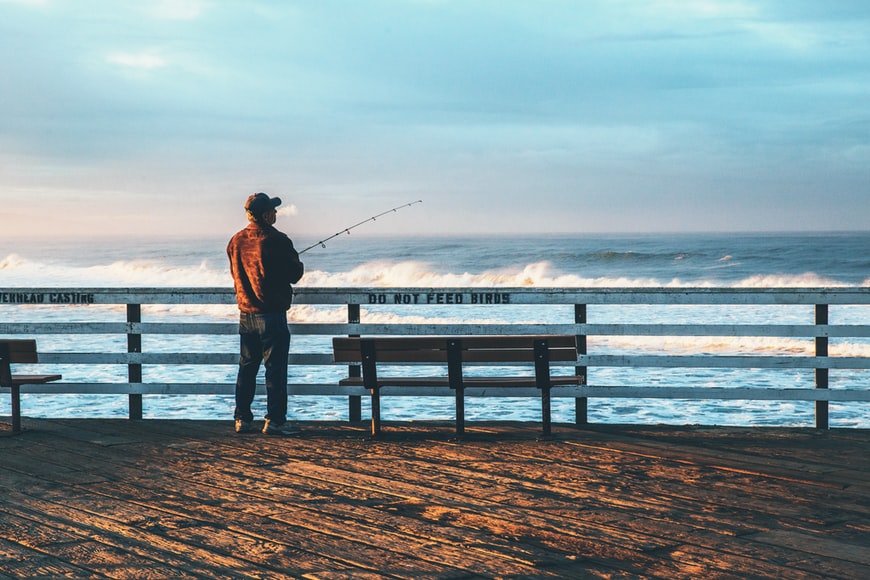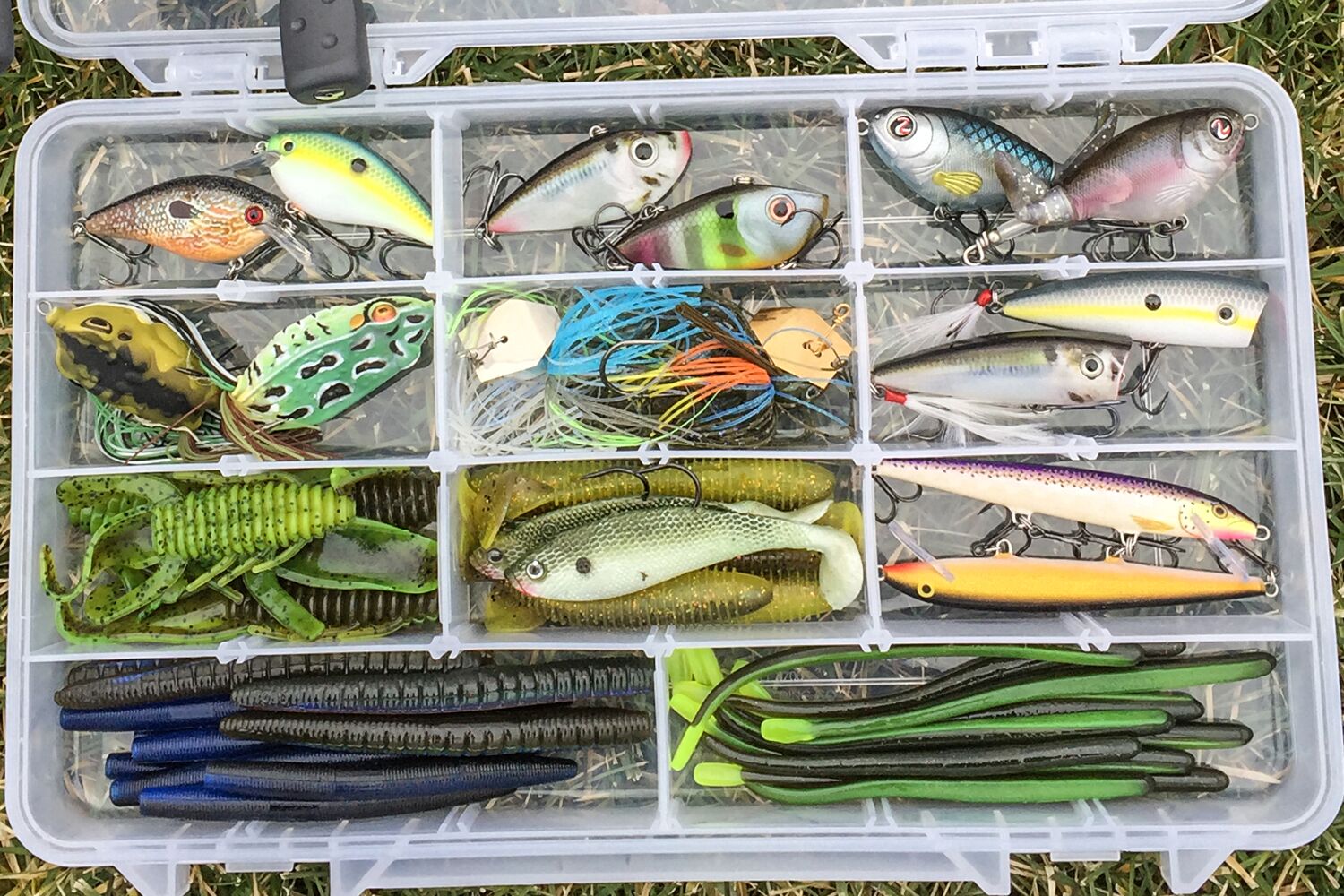Optimal Bass Fishing Seasons by Region: When to Fish
Any die-hard angler is going to get out on the water and try to snag the lip of their next personal record bass all year round. Once you have the fishing bug, it doesn’t go away because it’s too cold or rainy.
However, that doesn’t change the fact that there are optimal times to fish.
Unfortunately, those optimal times also differ a bit depending on where you are.
Today, the team at BassForecast is going to go over the best season to fish for bass in each region of the US.
So, you can make the most out of those periods and make sure you get out on the water more often than not.
Let’s get started.
Newsletter Signup
The Best Season for Midwest Bass Fishing
The Midwest is a temperate climate that, while mild in general, tends to have extreme shifts in climate with each change of the season.
As such, there are technically two amazing opportunities to catch some big bass without long lulls between bites, but one does get a slight edge that we’ll discuss.
First, there’s the spring.
After a cold winter with a mild amount of snow and ice, spring wakes the bass up, and they start heading out to spawn. This is the best time in spring to catch the big bass, but throughout the season, you’ll be able to catch plenty of dinks that just spawned or are still barely grown from the previous spawn.
You should get out on the water during the spring, but it’s certainly not the best.
You’ll mostly get your bites by targeting beds during the spawn, and once that spawn is over, the lake is usually full of smaller fish than it is the big lunkers everyone wants to catch. It’s a quantity-over-quality type of bite experience.
Instead, fall is the best.
Toward the end of August, you’ll get a long lull when it’s just too hot to score frequent bites, but once that first cool front moves in for fall weather to approach, you’re in for a treat.
The bite picks up, a lot of those spring bass are a little more fun to fight, and all the bass are going into a feeding frenzy.
Bass fishing in winter isn’t ideal in the Midwest. While it’s mild compared to Alaska, it’s well below the optimal temperature for a bass to thrive. So, they tend to pack on pounds as fast as possible to prepare for a time of lean meals.
The weather is also optimal. For much of the fall, the Midwest is cool, but it’s not cold. You can enjoy beautiful 70-degree days with water that’s just the right temperature for bass to be active throughout the first two-thirds of the season.
However, this does end as fall starts to transition into winter, and the bite will slow down again. So, make the most of it while you can.
To give you an advantage, we recommend three lures.
First, it’s time to bust out the crawfish jigs. If you can jig a crawfish across the bottom well, you’ll get some big bass. That’s a primary part of their diet throughout the fall in most Midwest bodies of water.
Then, try a crankbait that matches the forage. If you’re fishing in shallow water, go for a shallow-diving minnow, shad, or bluegill pattern. If you’re fishing deeper, crawfish patterns are great.
Finally, spinnerbaits are great options. They create enough noise and vibration that all those feeding bass will zone in on them.
Summer and winter can provide decent results, but when September comes, you need to get out on the water as much as possible. You have a couple of months where landing your new personal best is a good possibility.
The Best Season for South Eastern Bass Fishing
The south-east of the United States, including Georgia, Alabama, the Carolinas, and Florida are also typically best in the fall. However, unlike the middle of the country, they don’t experience too many dramatic lulls in fish activity.
The weather is fairly consistent from season to season, and year-round fishing opportunities are more practical than they are in Illinois or Iowa where the cold seasons dramatically change the water conditions.
With that being said, fall is still the best time. Not only are the fish more active, but it’s a better time for you, too.
We all know that the more you go into the southeastern part of the US, the hotter the summers are, and the more humid they are, too.
Bass are active throughout the summer, but as the temperature drops a bit for fall, they start to jump into action. They don’t suspend as often, you don’t have to worry too much about the time of day you’re fishing in, and like the Midwest, they’re feeding voraciously during this time.
So, a lot of different lures will work, and it’s a lot easier to find exactly what the bass are looking for.
We said that it’s also better for you because you can avoid all the pitfalls of spring and summer fishing in the southeast. Mosquitoes and other nuisances are dying off or at least shrinking in number, the weather is more favorable, and you can have a more enjoyable time on the water.
The Best Season for Bass Fishing the North-East
The northeast of the country is a little different than the other regions we’ve talked about thus far. In the winter, bass bites can be almost non-existent.
Stocked trout and various other cold-water fish are the preferred catch throughout the fall, winter, and early spring.
However, bass fishing sees a ton of action starting in the early summer and into the early fall. This is roughly from the beginning of June to the beginning of November. Then, the bite dies off, and you’re usually better targeting something else.
This is because of the northeast’s climate. It’s a lot colder than most other parts of the country, but late spring and summertime are both very mild with weather that consistently supports an active bass population.
It’s also a lot more enjoyable for you as an angler since it’s not excruciatingly hot, but there still isn’t an excess of bugs.
Smallmouth are the typical targets for northern bass fishermen, but largemouth are also available.
There is another point worth making, though.
Due to the short peak period, you’ll notice that the northeast isn’t known for very impressive state records like some of the areas with more suitable year-round weather. Especially as you start to reach New York and other far-north states.
The Best Season for Bass Fishing in the Northwest
The northwest, especially near the Pacific coast, has a wide window for bass anglers to get plenty of action. Specifically, you can expect the bass to bite frequently between spring and fall. The only time they tend to slow down is during the winter.
As such, this gives the bass plenty of time to grow without long-lasting lulls in feeding opportunities, and you can expect some larger-than-average bass to tighten your line.
You also benefit from a wide variety of fishing opportunities in the region. It’s known for having plentiful crystal-clear lakes, pad-covered ponds, mucky canals and ditches, natural and manmade fisheries, and plenty of mountain streams and other wild areas.
Thanks to the long active period, you can enjoy an extremely varied fishing experience from anywhere in the region for most of the year.
One thing to consider is that this advantage does shrink the more you move inland. It’s still far better than New York or a similar state that is usually cold, but the window of opportunity does shrink by a few weeks.
Because of the vast array of fisheries in the region, it’s hard to recommend specific lures or gear. So, it’s typically best to match the hatch and the water conditions for any given spot.
The Best Season for Bass Fishing in the Southwest
The southwest of the United States, such as Texas and southern California, provides some of the best bass fishing in the world. While it does tend to be extremely hot by most people’s standards, it does sustain a nearly year-round active bass population in many parts of the region.
For many, fishing in the spring in Texas, SoCal, southern New Mexico, and similar areas simply can’t be beaten. The weather is agreeable for anglers and fish alike, the bite is in full swing at all times, and the water temperature is steady.
There's also the spring spawn to think about. Getting onto a bass bed in spring is practically a guarantee that you’ll catch some of the nicest bass of your life as long as you’re presenting a lure properly.
Also, consider that the region frequently breaks its records. Texas records and California records are among the highest in the country.
You also get the benefit of a more organized record process that ensures fairness and encourages anglers to try to beat records on various levels.
So, if you’re a competitive angler, this is the region to be in, and spring is the best time to try to get in the record books.
What This Means for Your Fishing Experience
While we’ve spent a lot of time talking about the optimal seasons, there’s an important fact to consider.
If you want to put in the work, you can get a bass on the hook. Even in the least optimal conditions.
There’s a whole tournament based around it. The Bass Master Classic is held in the middle of winter, and anglers pull big bass out of the nearly-frozen lakes every single year.
If you’re serious about bass fishing specifically, it’s almost an unwritten rule that you need to get out there and push through the rougher periods. Not just to learn new strategies and overcome challenges, but to show yourself that you can get a bass even when everyone else is hanging up their rods or switching to new species.
However, if you’re a more casual angler, and you don’t care about proving anything or pushing your limits, these optimal seasons are good to know.
During the optimal season, you can target your favorite local bass variety, aim for your new personal best, and have a great time doing it without too much challenge. When the season is over, there’s always another species you can target. In the northern states and some parts of the Midwest, many switch to trout, sturgeon, pike, and similar fish. In the coastal states, you might want to try your hand with saltwater fishing or targeting some more exotic species during the hottest parts of the year.
It depends on how you approach fishing and what your goals are, but don’t take these seasonal suggestions too seriously.
There are lots of other factors that affect your ability to catch a bass.
Our Top Suggestions for Optimizing Your Time During Peak Season
If you’re specifically targeting the optimal bass fishing season to get a new personal record, it’s not enough to just go out.
You also need to optimize how you get on the water.
First, your lure selection needs to be on point. It’s a little easier to cycle through lures when you know the bass are extremely active, but you still have to consider that every second spent using the wrong presentation could be a bass lost.
Learn how to choose a lure based on water conditions and forage, and cycle through those first every time.
Then, you need to focus on mobility. In the peak season, the bass aren’t suspending unless a temporary weather condition forces them to. They’re moving around nonstop to find food and pack on pounds.
If you’re standing in one place wondering why they’re not biting, you need to move to a new spot. Once you find them, you have a honey hole of opportunity.
Finally, take the opportunity to leverage tech to your advantage. Whether that’s your favorite fish finder or the BassForecast fishing app, the faster you can find optimal spots, the better you can optimize your performance.







.png)
.png)